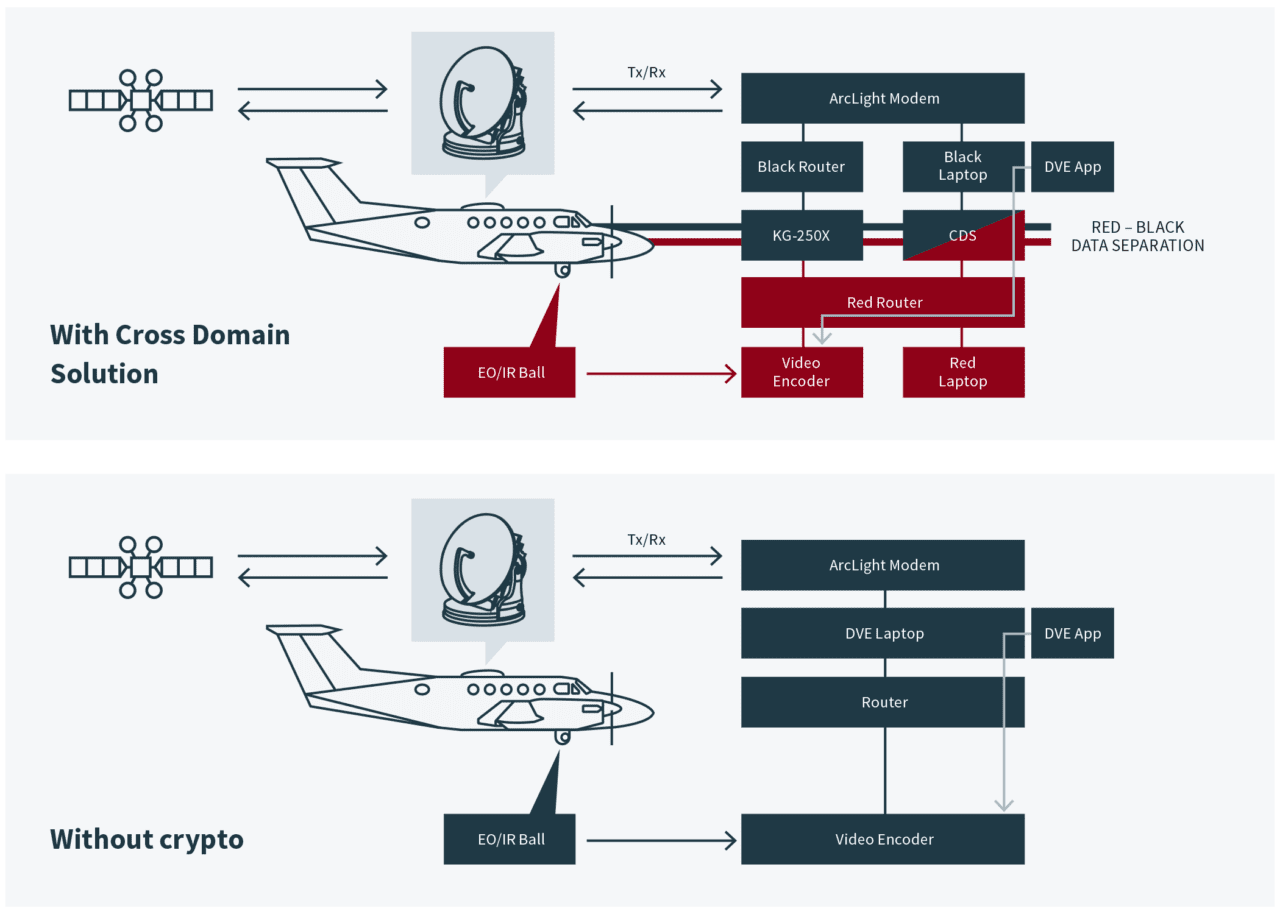
A schematic of Viasat’s Dynamic Video Encoding application, which is to improve satellite connectivity for military ISR aircraft. Photo: Viasat.
Viasat’s new Dynamic Video Encoding (DVE) application is to improve satellite connectivity for military intelligence, surveillance, and reconnaissance (ISR) aircraft.
“In today’s ISR missions, aircraft are forced to travel long legs from base to objective, where satellite return link data rates can change depending upon the position of the aircraft within the satellite footprint,” according to Viasat. “As the aircraft traverses higher data rate contour rings, they are unable to adjust sensor data rate automatically. Recognizing this limitation, Viasat developed Dynamic Video Encoding (DVE), an application that optimizes ISR data feeds based on satellite capability, and if need be allows for configuration to occur across security boundaries.”
Since 2007, the U.S. military has deployed 10 Boeing Wideband Global Satcom satellites (WGS) that use the Ka-band frequency, but bandwidth demands continue to rise for forces in the field and commanders back in the continental United States.
The commercial satellite industry will likely be key to achieving significantly higher throughput, as some commercial High Throughput Satellites (HTS) such as the Viasat constellation can transmit 100 gigabits per second of data and up — significantly more than the capacity of military Fixed Satellite Service (FSS) satellites.
Viasat’s DVE effort began in 2017, the company said. DVE “increases the utility of Beyond Line of Sight (BLOS) video streams for ISR missions where the aircraft travel long legs from base to objective with changing satellite return link data rates,” Viasat wrote in an email to Avionics International in response to questions. “Dynamic Video Encoding will enable the aircraft to continue streaming video in areas of satellite coverage where they might not have been able to receive/transmit any video at all. Additionally Dynamic Video Encoding will maximize the video quality for the aircraft in all regions of the satellite beam footprint in which it is flying.”
Using an Adaptive Return Link capability, Viasat’s DVE application “dynamically changes encoder data rates to fall within the maximum available return link data rate, enabling optimum use of available bandwidth,” according to Viasat.
“Viasat DVE is ideal for aircraft that traverse spot beam satellites with aggressive power levels (G/T & EIRP) [antenna gain-to-noise-temperature and Equivalent Isotropically Radiated Power] from beam-edge-to-edge,” the company said. “DVE enables feedback from the modem to the encoder, ensuring the encoder adjusts as the modem data rate changes. If there is a need to bridge the red and black isolation, the application takes advantage of a Cross Domain Solution (CDS) that enables configuration to update across security boundaries. Otherwise, Viasat’s DVE functionality can still be used to maximize the data rates, without a crypto requirement.”
Having a router configured for Quality of Service, DVE is able “to manage congested links for critical services and will enable beam to beam transition, continuous video, C2 (command and control), and situational awareness to increase mission capability and success to the warfighter,” Viasat said.